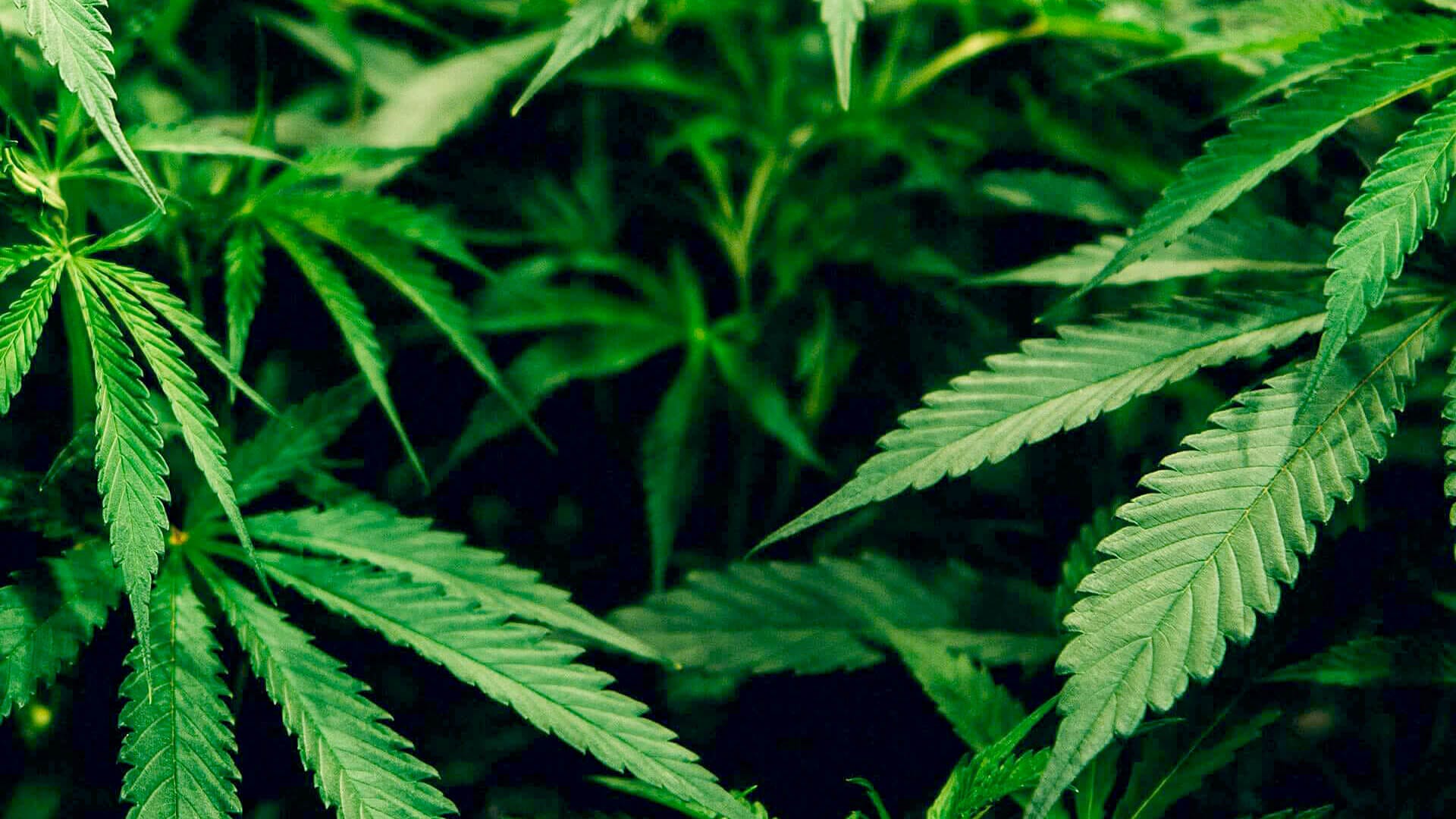What is Hemp?

(Almost) Everything You Ever Wanted to Know About Hemp
Used in thousands of products and for a myriad of purposes, scientifically, hemp is a botanical class of Cannabis sativa cultivars. Commonly known or referred to as ‘industrial hemp’, this multi-faceted plant is largely grown for use in industrial, medicinal and recreational use.
This versatile plant is a labor-intensive and challenging crop to grow. It is also in high demand. With relaxed regulations (including the 2018 Farm Bill) making the cultivation and sale of hemp easier to comply with, the global market has boomed to what some analysts place at an estimated 4 billion USD in 2021.
What makes hemp so attractive is its rapid growth, ranking among the likes of bamboo as one of the fastest-growing plants, as well as its versatility when refined.
Scientific Name: Cannabis Sativa L (hemp)
Chemotypes: II, III, IV, V
Etymology and Origin of Hemp
Etymology of Hemp
The oldest known appearance in language, which some scholars suspect was borrowed from Scythian or Thracian societies, is the Greek word κάνναβις (kánnabis). Turns out, word spread fast even in the ‘old world’, with Latin, Slavic, Finnish, Baltic and Germanic cultures soon adopting this nomenclature into their own languages.
It is suspected that it was from the Germanic language that hemp was adopted into Old English as hænep or henep. Others have argued that the adoption of the name ‘kannabis’ was historically a more recent event, originating around what we now know as Iran; a plausible theory given the prevalence of older and prehistoric non-THC varieties of hemp in the region. Still yet, there remains the possibility that hemp’s origin rests with the Assyrian’s, calling it ‘qunnabu’, a term used to describe fiber, oil and medicine throughout the 1st millennium BC.
Origin of Hemp
Not for lack of effort, try as it may, science has not yet discovered a common ancestral source of hemp from which all hemp is related. What we do know is that hemp’s origin stems from the hills of Central Asia, dating back as far as recorded history itself.
Archaeologists have discovered documentation of cultivating hemp fiber dating back as early as the year 2800 BCE, with evidence that hemp cultivation was spread over Europe and the Mediterranean throughout the Middle Ages. Later, hemp would make its way to Chile (sometime during the 1500s), and near a century later, to North America.
Characteristics of Hemp
Physical Characteristics and Appearance of Hemp
Hemp is a sturdy, vertically erect, and aromatic annual plant growing to between 4-15ft in height and between ¼” to ¾” in diameter.
The leaves of hemp are described as palmate in shape (meaning they have several lobes originating from a central point), usually featuring between 7-11 leaflets each, and serrated at the edges. Hemp’s flowers tend to lean towards the smaller side, ranging from yellow to green. It is from these flowers that female hemp plants produce pollen, and seeds from the pistillate.
Long, hollow cylindrical stalks make up the stems, which are solid at the base and the tip. These stems tend to branch when plants are situated adequately apart, but do so less when planted in close proximity to each other.
The hemp plant’s innermost layer of the stalk is referred to as the ‘pith’. This pith is then surrounded by a wood-like material called hurds. Enveloping the hurds is a layer of plant tissue from which the hurds are produced towards the inside and fibers towards the outside.
Of great interest, is the long flexible fibers of hemp, generally greenish, yellowish, gray or dark brown in color. These fibrous strands are highly tactile, durable and strong, making them ideal for use in rope, sacking a wide range of other products. More on hemp’s uses below.
Hemp Derived Products
What is Hemp Used For?
The Early Uses of Hemp
Hemp was first used as a source of food for both animals and people throughout India and China. For the greater part of three millennia (3000 years), hemp was the largest global agricultural crop. Apart from food, the plant was used across the world for its fibers, used for fuel and medicine, as well as for making textiles, clothing, paper and more.
Of note is the cultural and religious status of hemp in ancient China. In 2000 BC, hemp was revered as one of the ‘5 grains’, comprising one of the five crops thoughts by the Chinese to be ‘sacred’.
Hemp’s Uses from 200 BC Through the 1800s
Throughout this time period, hemp continued to be predominantly used for paper, clothing and cordage. Of note is the extensive description of hemp cultivation techniques in the ancient Confucian text “The Essential Arts for the People” circa 600AD. Interestingly, many of those hemp cultivation techniques, including the use of ‘potash fertilizer’ is still employed by many hemp farmers today.
Hemp’s Uses In Europe Between 500-1000AD
Introduced to Europe sometime between 500 and 1000 AD, hemp quickly rose in popularity among local farmers and paper producers, who initially used hemp to make bibles. Under the reign of King Henry VIII (1533), hemp was considered such a valuable and necessary crop that farmers were fined if they refused to plant it.
Across the Pond: Hemp Makes its Way to America
In early colonized America, Virginia and other colonies made it a legal requirement for farmers to grow hemp. George Washington himself was quoted in 1794 as saying, “Make the most of the Indian Hemp Seed, sow it everywhere.” It wasn’t until the development of petroleum products (a major catalyst for the industrial revolution) that hemp production being to wane.
Modern Uses of Hemp
Today, hemp is a renewable source of raw materials used to make over 25,000 commercial and industrial hemp-derived products, many of which are sustainably and environmentally superior to the alternatives.
Hemp-Derived CBD
Deserving of its own category, hemp-derived CBD has skyrocketed in popularity among consumers worldwide. According to some research, the global CBD market size has been estimated to sit at an astonishing $2.8 billion USD in 2020, with expectations that the market will reach $3.5 billion USD by the end of 2021.
With no signs of slowing down, it is expected that the global compound annual growth rate for CBD oil will continue at a breakneck pace, reaching 21.2% extending from 2021 to 2028.
What is CBD Oil?
Cannabidiol (CBD), is one of over 100 discovered cannabinoids isolated from the Cannabis plant, and comprising up to 40% of the plant’s extract.
Although structurally similar to Tetrahydrocannabinol (THC), CBD is not psychoactive and does not produce the ‘high’ associated with marijuana use.
According to the World Health Organization (WHO), CBD has demonstrated potential for the treatment of epilepsy. Later, Epidiolex®, produced by Greenwhich and GW Pharmaceuticals, would go on to become the first FDA-approved pharmaceutical-grade prescription cannabidiol oil product.
The World Health Organization (WHO) went on to state that CBD is generally well-tolerated with a good safety profile. While the use of CBD oil is prominent among consumers worldwide, further investigation and studies are needed to determine its potential as an adjunct therapy or treatment for any type of medical condition.
Hemp in Building Materials
As a construction material, hemp offers a myriad of benefits and overcomes several challenges faced by the industry. Hemp-derived materials are breathable, naturally resistant to mold, durable and lightweight. According to the Building Research Establishment (BRE), data collected on hemp as a renewable resource for building materials proved to be more sustainable than the majority of currently utilized raw materials. This research also found that hemp has the potential to reduce both secondary pollution and energy consumption costs.
Examples of Hemp Derived Building Materials Include:
- Insulation
- Concrete
- Plaster
- Composites
- Oil-based paints (hempseed oil)
Hemp in Textiles
The durability, flexibility and strength of hemp fibers make it an ideal candidate for a variety of textiles.
Examples of Hemp Textiles Include:
- Paper and paper products
- Fiber boxes
- Cordage
- Rope
- Canvas
- Fabrics
- Upholstery
- Blankets
- Bagging and sacks
- Threads
- Clothing (shirts, pants, dresses, etc.)
- Fashion accessories (shoes, hats, wallets, gloves, etc.)
- And more…
Nutrition, Wellness, Beauty and Medical
Hemp and hemp derived products, such as hempseed oil, have and are currently used in a wide range of health and wellness applications.
Examples Include:
- Moisturizing creams and beauty products
- As a food source or nutritional supplement
Fuel and Agriculture
Hemp’s versatility never ceases to amaze, with this sustainable crop being used in everything from animal feed to biofuels.
Examples Include:
- Natural mulch and fertilizer
- Plant bedding
- Animal bedding
- Animal feed (such as bird feed)
- Biofuels
- And more…
How is Hemp Cultivated?
Where is Hemp Grown?
Hemp thrives in temperate climate zones with mild seasons and a moderately humid atmosphere.
Hemp Cultivation in the United States
In the US, hemp is grown mostly throughout Colorado, Tennessee, Kentucky, Northern California, Vermont and Oregon.
Hemp Cultivation in China
China has risen to become the world’s largest cultivator of industrial hemp, producing an estimated 44,000 metric tons annually. Similarly, China accounts for around 38% of the world’s total hemp seed production.
Hemp Cultivation in Columbia
Given the tropically warm climate, large land fields and humidity levels, Columbian farmers are able to harvest between 3-4 hemp crops each year, helping them to grow as a global contributor to the industry.
Hemp Cultivation in France
Although hemp can be found grown throughout Western Europe, France is by far the largest producer, representing nearly 59% of the world’s hemp seed production. Varieties which thrive in France are typically best suited for use as fiber and grain.
Hemp Cultivation in Lithuania
In 2019 Lithuania made significant strides in its agricultural sector, growing 22,689 acres of industrial hemp and outpacing regional competitors (such as Germany) by nearly double.
Other Countries Where Hemp is Grown
- Germany
- Canada
- Ecuador; and
- Other South American Countries
What Type of Climate Does Hemp Prefer?
Hemp thrives best in mild and humid climates, with annual rainfalls of between 25-30”.
What Type of Soil Does Hemp Prefer?
Although hemp is capable of being grown in a wide range of soil types, the plant prefers deep, aerated soils with a pH of around 6. The ideal soil will be capable of holding in both moisture and nutrients, while also balancing drainage. Excess water and waterlogged roots can damage the plant, as can soil compaction.
Soil Preparation for Growing Hemp
In order to facilitate rapid and uniform germination, hemp seeds require a firm but not overly compact seedbed, with seeds placed at a depth not to exceed 2”.
While some farmers employ ‘no till’ systems with good results, such methodology can be prone to erratic seed emergence.
Nutrition for Hemp Crops
The rule of thumb with hemp, is to double the amount of nutrients that the crop will remove from the soil by harvest time. Due to hemp’s rapid and robust growth cycle, nitrogen uptake is significant, especially during the first 6-8 weeks post-germination. By contrast, phosphorous is the primarily needed nutrient during both flowering and seed formation.
Industrial Hemp Nutrition Requirements (summarized):
- 80-100lbs per acre of nitrogen
- 35-50lbs per acre of phosphate
- 52-70lbs per acre of potash
Weed Control
One of the unique benefits of growing hemp is that the plant is a natural and efficient weed suppressor, requiring little or no pesticides to damper invasive weeds.
Seeding and Germination of Hemp
Timing is typically dictated by both soil and weather conditions rather than a specific calendar date. Generally speaking, hemp can be seeded ahead of corn by around two weeks, but should not take place until soil temperatures reach at least 42-46°.
Germination happens fairly quickly, usually within 24-48 hours, with seedlings emerging between 5-7 days on average (weather and moisture permitting).
Seed densities between 250-400 seeds, or 50-60lbs per acre is generally ideal for balancing production/yield with natural weed control.
Crop Rotation
Although hemp can be effectively grown for several successive years in the same field, rotation with other crops is advisable. Due to hemp’s versatility, it normally performs well regardless of the preceding crop planted.
Harvesting of Hemp Crops
Once the last pollen has been shed from it’s flowers, harvesting of hemp fiber can begin. Hemp fiber is usually ready for harvesting between 70-90 days post-seeding.
Seed harvesting typically takes place between 4-6 weeks after fiber harvesting, at a point when nearly 60% of the seed has ‘ripened’.
Yield of Hemp Crops
Most farmers project for between 3-4 tons of baled hemp stalks per planted acre.
How Does Hemp Cultivation Compare to Other Crops?
Hemp is one of the highest-yielding crops on the planet, capable of producing nearly double the amount of fiber per acre as does cotton, and more paper per acre than any other crop.
Hemp is tolerant, hardy, sustainable and produces a consistently high yield year after year. It is naturally weed-preventing, requiring no herbicides, reducing the production cost and making it a more environmentally friendly crop to cultivate.
OTHER KEY BENEFITS OF HEMP CULTIVATION:
- Has few natural predators, reducing costs on insecticides
- Naturally weed-preventing, reducing costs on herbicides
- Can be utilized to restore depleted soils
- Can be used as a ‘mop crop’ to restore fields damaged by chemical use
- Is in high demand, creating opportunities for employment and profit
- Is environmentally and ecologically friendly
- Is fast-growing and produces a strong consistent yield
Hemp Regulations
What is The Legal Status of Hemp Worldwide?
Although hemp has experienced its fair share of regulatory hurdles over the last decade, in more recent times, restrictions and regulations surrounding the cultivation and use of hemp products globally have begun to wane.
That said, there is still a significant disparity in the laws and regulations surrounding hemp cultivation, distribution and use worldwide.
Hemp Legal Status in the United States
In 2018, then President Donald Trump, signed into law the Farm Bill. This bill was a landmark achievement for the hemp industry. This bill removed significant barriers and restrictions surrounding the cultivation, use, distribution and selling of hemp and hemp-derived products.
Hemp Legal Status in Europe
The European Union (EU) sets forth guidelines regarding the use of cannabis plants, including hemp. Generally speaking, products are permitted so long as they have less than 0.2% THC. However, each European country has its own laws regarding hemp.
Hemp Legal Status in Asia
While some Asian countries have softened their stance on cannabis, overall Asian countries remain wary of the plant, having enacted several laws which make the plant illegal in many of its nations.
Hemp Legal Status in Latin America
Several Latin American countries have significantly relaxed their laws surrounding the use of cannabis plants. For example, on October 31, 2018, a Mexican supreme court ruled in favor of legalizing the cultivation, possession and distribution of both hemp and hemp products, including CBD oil. Uruguay took things a bit further, legalizing the use of cannabis plants for both recreational and medicinal purposes, including hemp, CBD oil and marijuana.
Hemp Legal Status in Africa
Countries such as Ghana, Lesotho, Swaziland, South Africa, and Morocco have already legalized the use of recreational marijuana, while hemp still remains in the wind. In Zimbabwe, the country is encouraging the cultivation of hemp as an alternative to tobacco for export.
Hemp: Arguably the Most Versatile Agricultural Crop on the Planet
Hemp has had a storied past, going from being legally mandated in several parts of the world, to widely outlawed and illegal, and back again to a status ranging from legal to semi-legal to highly restricted in various jurisdictions based on cultural, political and economic pressures.
Today, many nations are relaxing their stance on hemp, realizing once again its vast potential as a sustainable and renewable crop capable of producing high yields and for use in thousands of products from industrial to consumables to health and wellness products.
MOUNTAIN Smokes®
ZERO TOBACCO. ZERO NICOTINE. Premium Organic Full-Flower Hemp Smokes.
 SHOP MOUNTAIN SMOKES
SHOP MOUNTAIN SMOKES Made in the USA
Made in the USA Satisfaction Guaranteed
Satisfaction Guaranteed SSL Secure Checkout
SSL Secure Checkout


